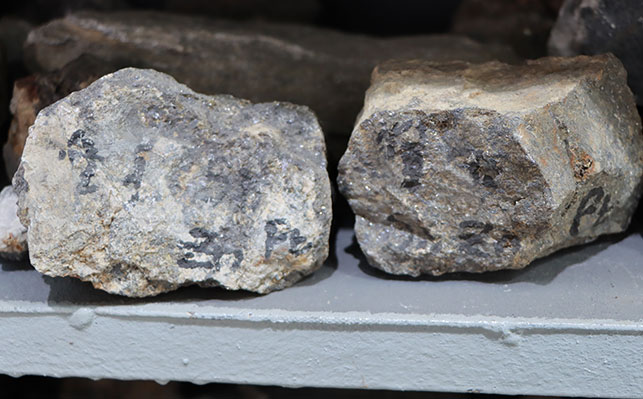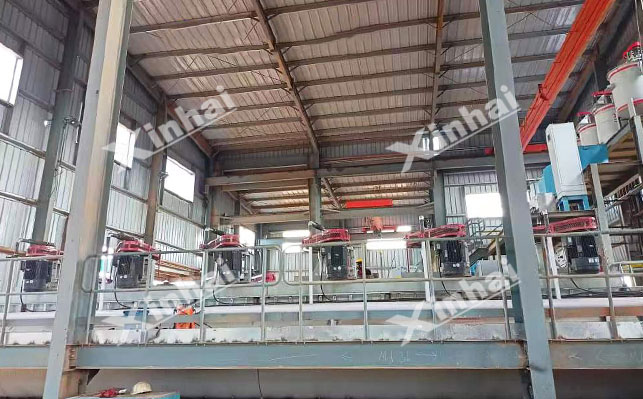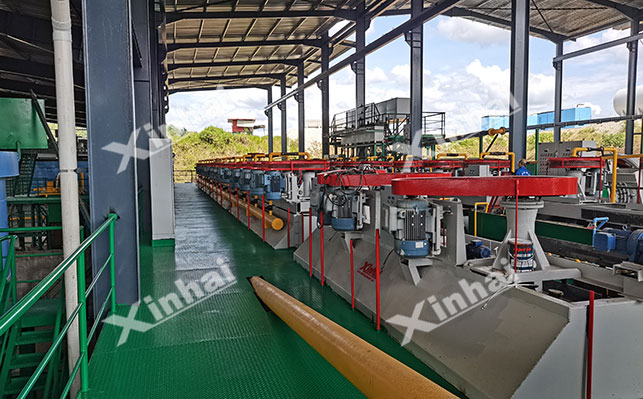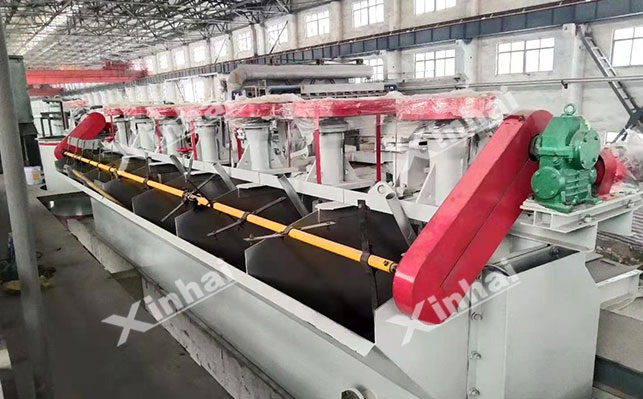
15311826613
Click to add WeChatLead-zinc ore is an important nonferrous metal mineral resource in my country, and is widely used in the fields of electrical industry, mechanical industry, military industry, metallurgical industry, chemical industry, light industry and pharmaceutical industry. According to the degree of oxidation, it can be divided into lead-zinc sulfide and lead-zinc oxide. Due to the continuous development of lead-zinc sulfide, it is becoming increasingly exhausted. Now it is being developed for lead-zinc oxide, and the commonly used method is mainly flotation. Let's learn about what is lead-zinc oxide ore and the flotation process of lead-zinc oxide ore.
Lead-zinc oxide ore mainly comes from the oxidation zone of sulfide ore, which is formed by long-term weathering and leaching of sulfide ore. There are many types of this type of lead-zinc ore, including 9 types of lead oxide, the main minerals of which are cerussite (PbCO3) and lead alum (PbSO4); and 13 types of zinc oxide, mainly smithsonite (ZnCO3) and willemite (Zn2SiO4).

Due to the various types of minerals contained in oxidized lead-zinc ore, they are mixed with semi-raw and embedded with fine particles, and the mud phenomenon is serious. In addition, there are few pure oxidized lead deposits or oxidized zinc deposits, and almost all of them contain both sulfide and oxidized ores. There are two principles for flotation:
The first is "sulfur first, oxygen second", that is, flotation in the order of galena-sphalerite-lead oxide-zinc oxide;
The second is "lead first, zinc second", that is, flotation in the order of galena-lead oxide-sphalerite-zinc oxide.
The main flotation processes are: sulfide flotation, fatty acid collector flotation, chelating agent flotation, flocculation flotation.
Sulfide flotation of oxidized lead-zinc ore can be roughly divided into two categories: sulfide-xanthate flotation and sulfide-amine salt flotation.
Sulfidation-xanthate flotation: is to pre-sulfidate the surface of lead zinc oxide, so that the surface of lead zinc oxide is covered with a layer of hydrophobic sulfide film, and then use xanthate collectors for flotation. Although lead zinc oxide can be recovered by xanthate after sulfidation, zinc oxide needs to be activated by copper sulfate (sulfur hydrogen ions and copper ions) before it can be flotated by replacement. However, this flotation method requires heating the pulp (50~60℃) to facilitate the sulfidation of zinc oxide minerals and the adsorption of reagents.

Sulfide-amine salt flotation: Sodium metaphosphate can be used as a dispersant, sodium sulfide as a sulfiding agent, copper sulfate can be used to activate zinc oxide ore, and when the pH value of the slurry is adjusted to 9, mixed amines can be used as a collector to float zinc oxide minerals. However, this flotation method is sensitive to ore mud and soluble salts, and has poor selectivity for gangue minerals that are easy to muddy in the original ore, and the consumption of reagents is large.
This method is usually suitable for treating silicate and phosphate oxidized ores. It can be used directly for the flotation of zinc oxide, and can also be used for reverse flotation to remove carbonates and sulfates to improve the concentrate grade. In the flotation of oxidized lead-zinc ore, cerussite can be first floated with sulfide-xanthate, and then Na2CO3 and Na2SiO3 can be used to inhibit silicate gangue minerals, and oleic acid can be used to directly float smithsonite. However, fatty acid collectors have a poor effect on the separation of oxidized lead-zinc ore containing carbonate and sulfate gangue minerals.

Chelating agent is a highly selective collector. Commonly used chelating agents include mercaptocarboxylic acid esters, especially tetramethyl dipentyl trimercaptopropionic acid ester, which has a good collection ability for smithsonite. When the chelating agent is used as a collector, sodium hexametaphosphate and zinc sulfate salt water glass can be used as inhibitors to inhibit calcite and other gangue minerals. In the ore pulp at room temperature and natural pH value, smithsonite and cerussite can be effectively separated from the vein minerals. However, the price of chelating agents is relatively expensive, and at present, they are not widely used.

Flocculation flotation is mainly used to select fine-grained oxidized lead-zinc ore. After adding selective flocculants, fine-grained oxidized lead-zinc minerals will agglomerate into larger particles, which increases floatability and achieves good separation of fine-grained gangue minerals. Carboxymethyl cellulose can be used as a flocculant, and then float lead first and then float zinc.
The above is an introduction to the reverse flotation process of lead-zinc oxide ore. In actual ore dressing plants, the selection of lead oxide and zinc oxide depends on the properties of the ores and the properties of the gangue minerals contained in them. Reverse flotation is not necessarily required. Therefore, it is recommended to conduct ore dressing test analysis and design a suitable flotation method for lead-zinc oxide ore through experimental research.